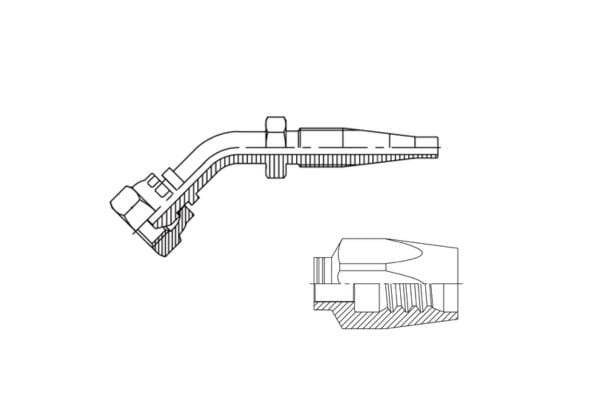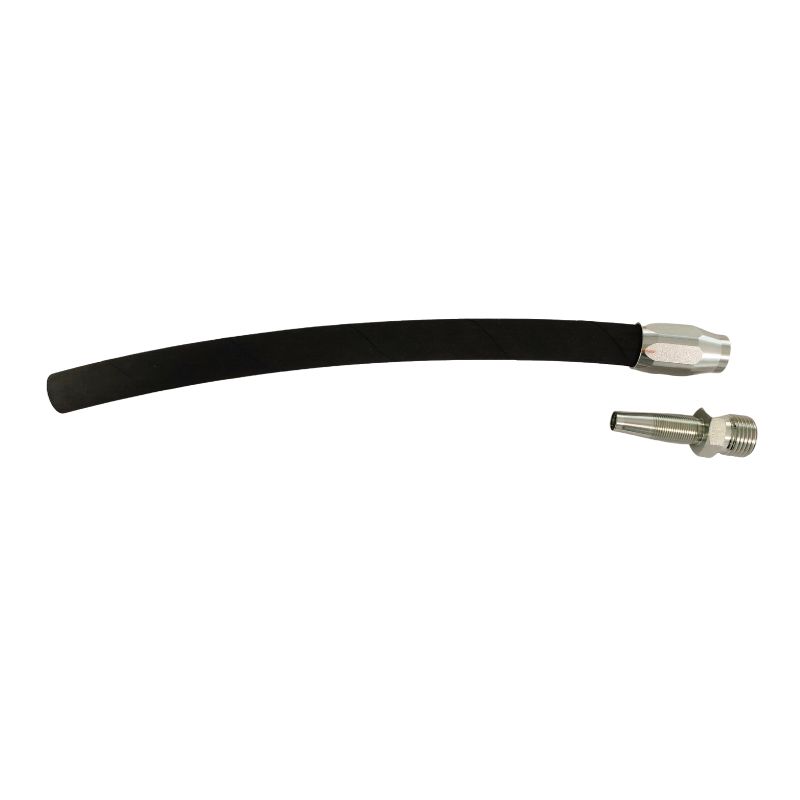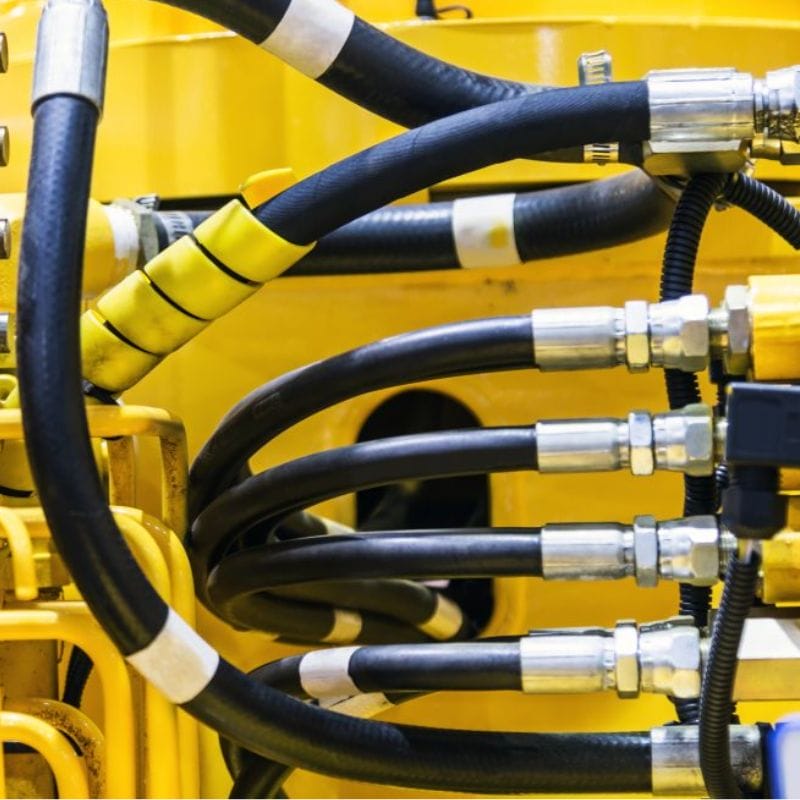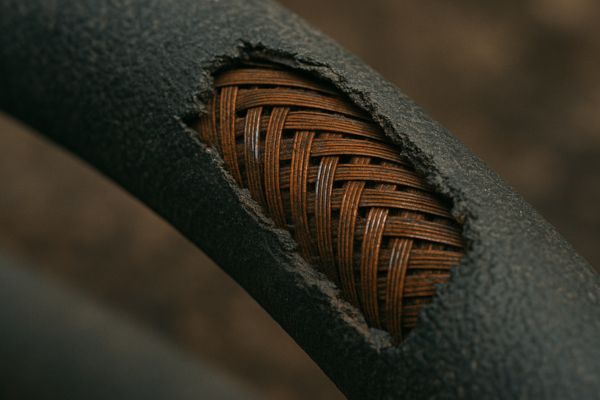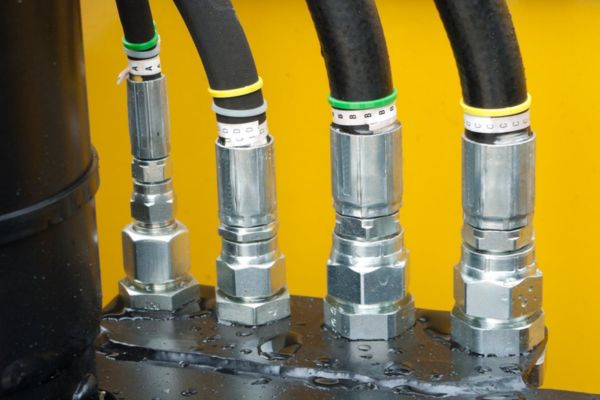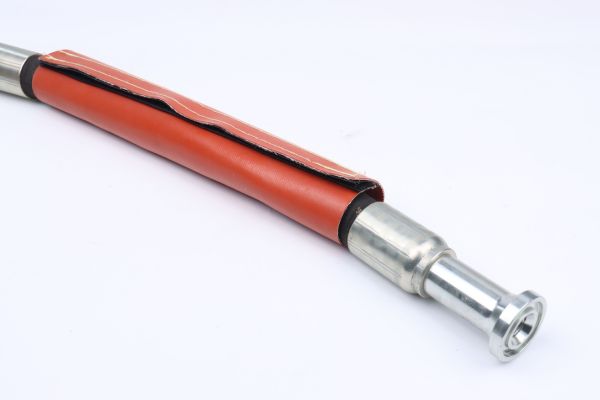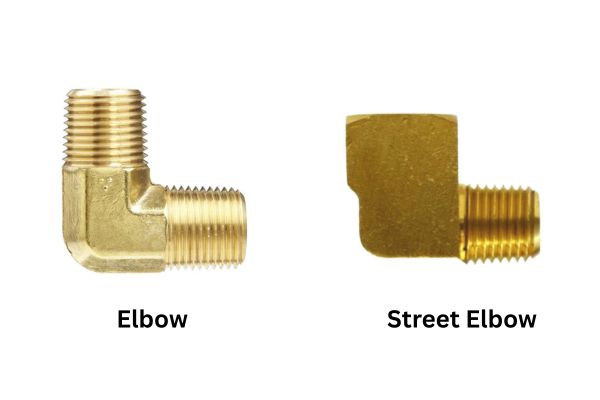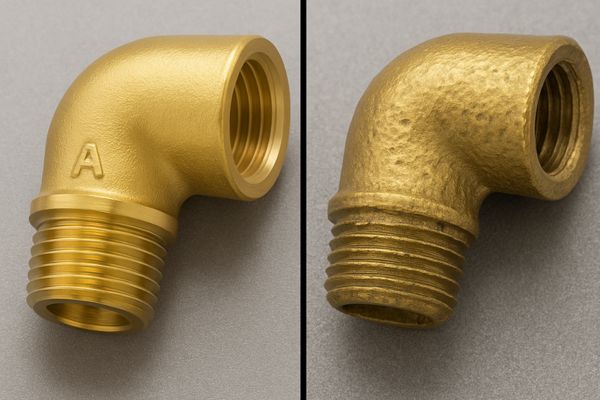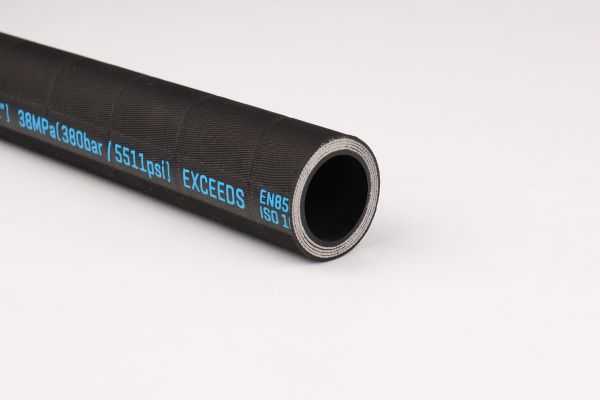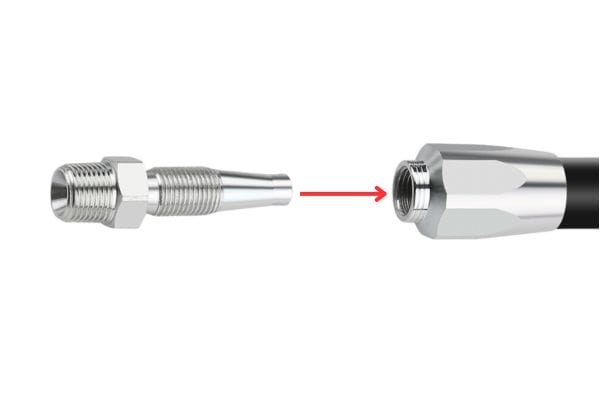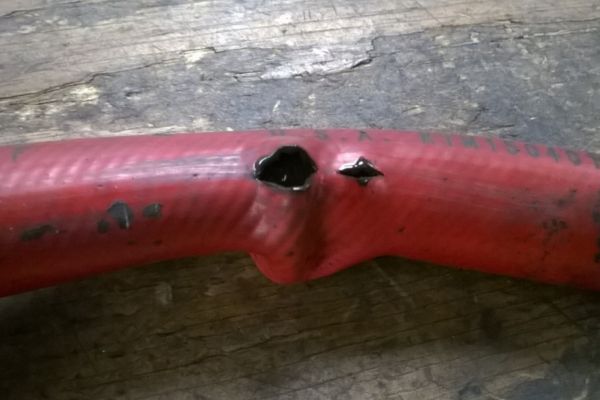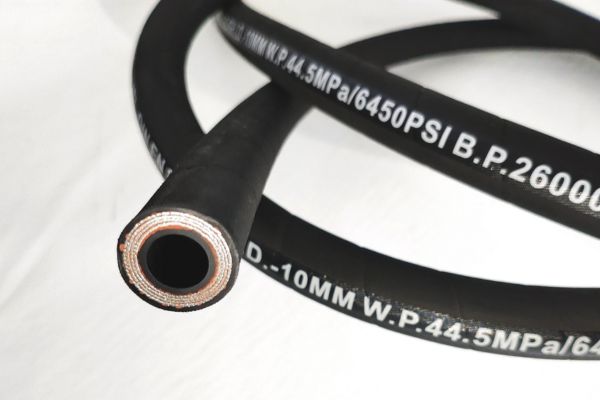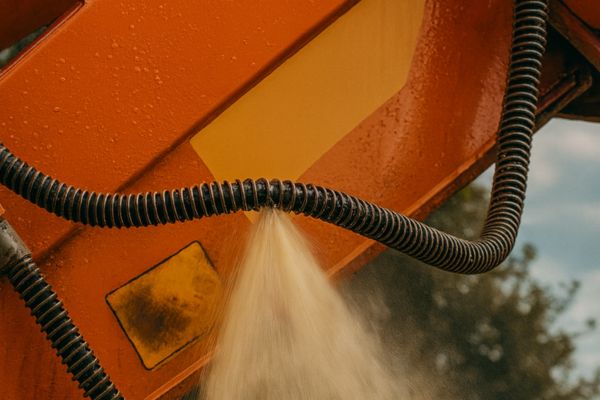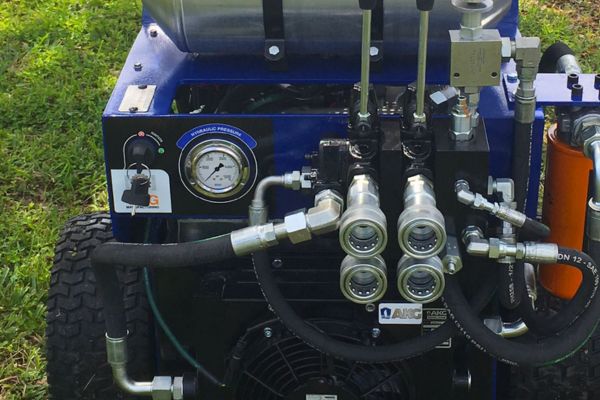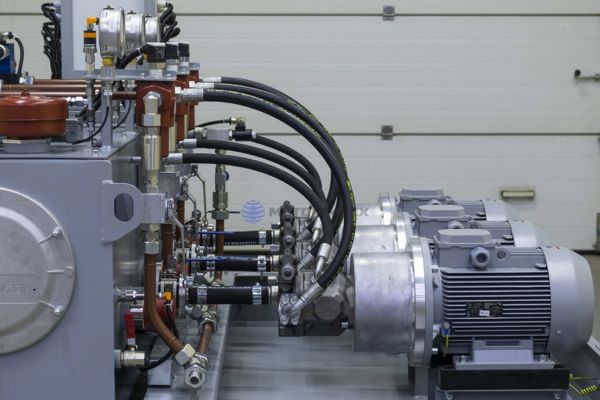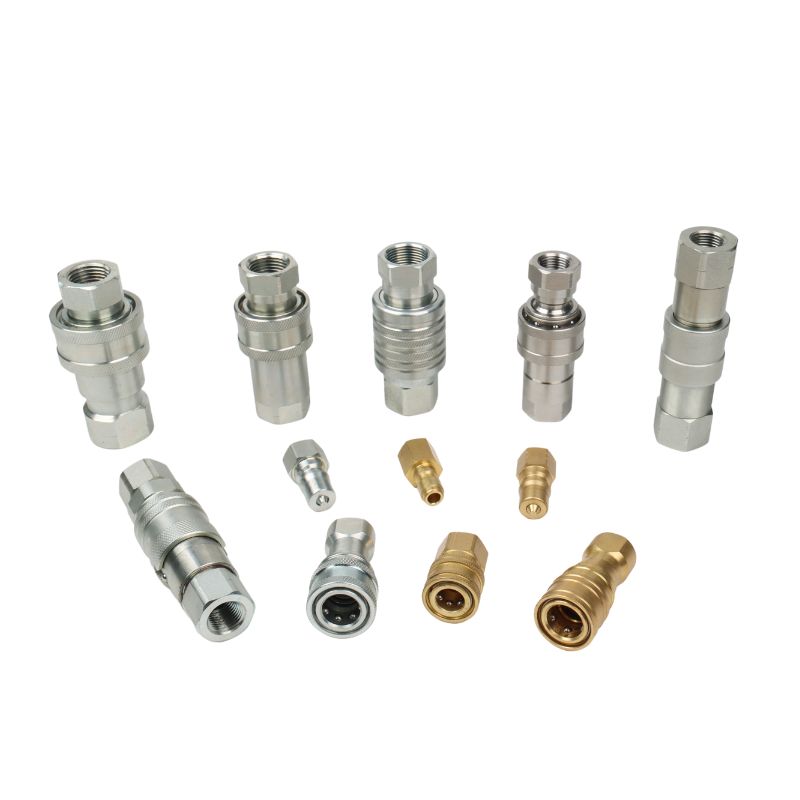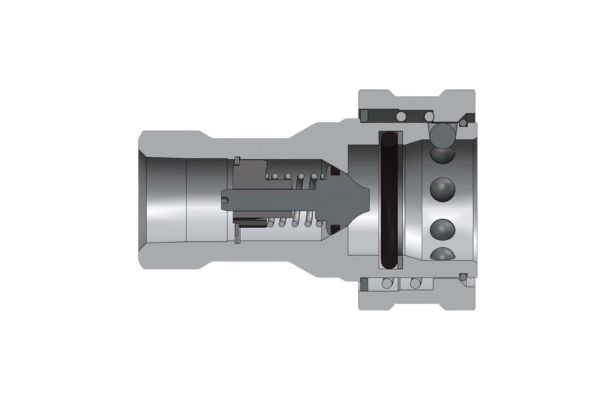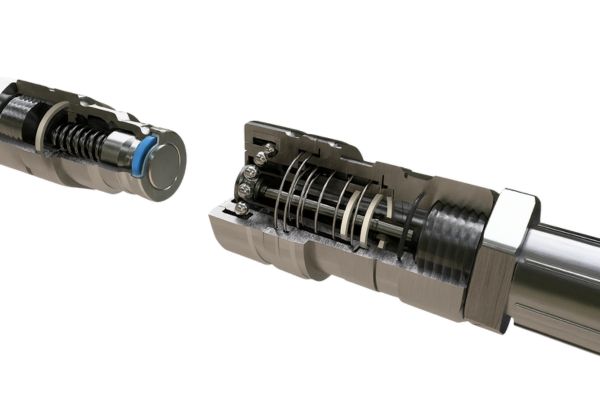Faced with codes like 100R2AT or EN 856 4SP, choosing the wrong hydraulic hose is an expensive mistake. Downtime mounts as you realize the hose you ordered can’t handle the pressure or doesn’t fit your equipment.
The main difference lies in construction (braid vs. spiral), number of reinforcement layers, and material. These factors determine the hose’s pressure rating, flexibility, and application. Matching the standard to your system’s requirements is critical for safety and performance.

In the world of hydraulic systems, the hose is the vital artery. Selecting the correct one is not a matter of guesswork; it is a precise technical decision dictated by international standards. These codes—a seemingly confusing mix of letters and numbers from bodies like SAE, EN, and ISO—are not arbitrary. They are a universal language that communicates a hose’s capabilities and intended use.
What Defines a Standard One-Wire Braid Hose?
You need a reliable hose for a standard, medium-pressure application. Over-specifying is a waste of money, but under-specifying is a dangerous risk. You need the industry’s default workhorse.
A one-wire braid hose, defined by standards SAE 100R1AT and EN 853 1SN, is the go-to choice for medium-pressure hydraulic systems. It uses a single layer of high-tensile steel braid, offering a great balance between pressure containment and flexibility.

The Flexible Foundation
The one-wire braid hose is the foundation of many industrial hydraulic systems. Its construction is simple yet effective. An inner tube, typically made of oil-resistant synthetic rubber, contains the fluid. This is wrapped by a single layer of braided high-tensile steel wire, which provides the strength to resist pressure. An outer cover, also of synthetic rubber, protects the reinforcement layer from abrasion, weather, and ozone. The key advantage of the R1AT/1SN hose is its flexibility.
With only one layer of wire, it has a smaller bend radius than its high-pressure counterparts, making it easier to route in tight spaces. It is the ideal choice for applications like machine tool hydraulics, agricultural implements, and general mobile equipment pressure and return lines. The “AT” designation in the SAE standard is important; it signifies a thinner cover compared to older R1 types, making it compatible with modern, efficient “no-skive” fittings, which simplifies assembly.
| Specification | Details |
| Common Standards | SAE 100 R1AT, EN 853 1SN, ISO 1436-1 Type 1SN |
| Primary Application | Medium-pressure hydraulic systems using petroleum or water-based fluids. |
| Inner Tube | Oil-resistant synthetic rubber. |
| Reinforcement | One layer of high-tensile steel wire braid. |
| Outer Cover | Abrasion and weather-resistant synthetic rubber. |
| Temperature Range | -40°C to +100°C (-40°F to +212°F) |
When Do You Need a Two-Wire Braid Hose?
Your equipment’s hydraulic system operates at a consistently high pressure. A standard one-wire hose is simply not strong enough, and you know a hose failure under high pressure is a catastrophic event.
A two-wire braid hose (SAE 100R2AT / EN 853 2SN) is required for high-pressure hydraulic applications. Its two layers of steel braid provide significantly higher pressure ratings, making it the standard for demanding construction and industrial machinery.

A Step-Up in Strength
The two-wire braid hose is the logical evolution of the one-wire design, engineered specifically for higher pressures. The core difference is the second layer of braided steel wire. This added reinforcement dramatically increases the hose’s ability to withstand pressure without bursting. To counteract the twisting forces that can occur under high pressure, the two braids are often woven in opposite directions, creating a more stable hose. This increase in strength, however, comes with a trade-off. The extra layer of steel makes the hose stiffer, resulting in a larger minimum bend radius. It also increases the weight and cost compared to a one-wire hose.
You will find the R2AT/2SN hose used on the primary pressure lines of excavators, loaders, and industrial presses—anywhere that reliable, high-pressure performance is non-negotiable. Like its one-wire cousin, the “AT” designation confirms its compatibility with modern no-skive fittings, which is a crucial detail for efficient field repairs and assembly.
| Specification | Details |
| Common Standards | EN 853 2SN, ISO 1436-1 Type 2SN, SAE 100 R2AT |
| Primary Application | High-pressure hydraulic systems across various industries. |
| Inner Tube | Oil-resistant synthetic rubber. |
| Reinforcement | Two layers of high-tensile steel wire braid. |
| Outer Cover | Abrasion and weather-resistant synthetic rubber. |
| Temperature Range | -40°C to +100°C (-40°F to +212°F) |
Why Choose a 4SP Spiral Hose Over a Braid Hose?
Your heavy equipment experiences constant pressure spikes and hydraulic shock. Braided hoses are failing prematurely due to fatigue. You need a hose construction designed for severe impulse conditions.
A 4SP spiral hose is chosen for high-pressure systems with significant pressure impulses. Its four layers of spirally wound wire offer far superior impulse resistance compared to braided hose, making it ideal for the demanding duty cycles of hydrostatic drives.
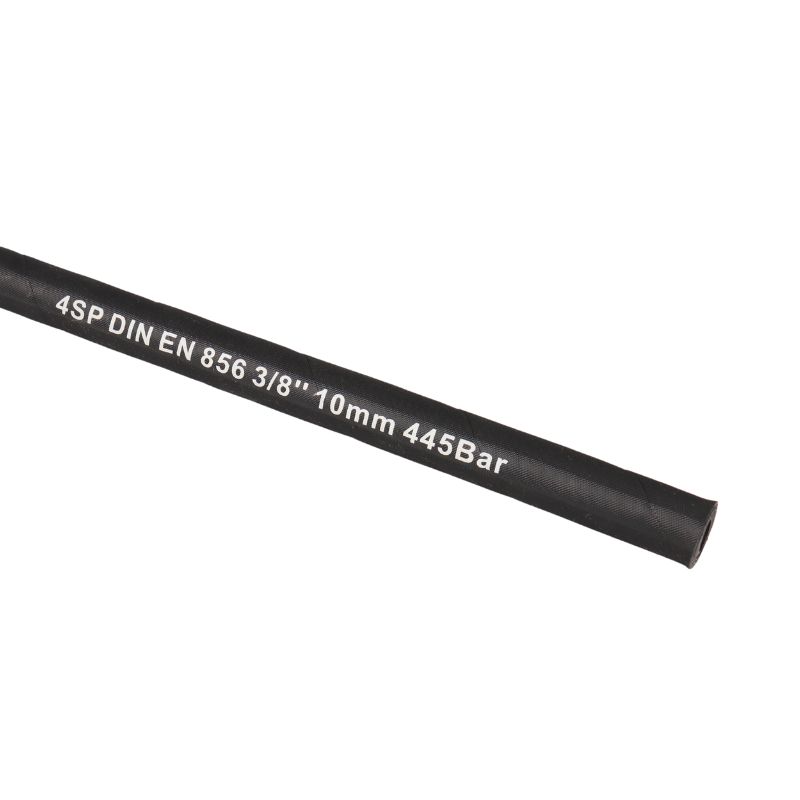
The Difference is in the Winding
To understand the 4SP hose, you must understand the difference between braid and spiral construction. In a braided hose, wires are interlaced over and under each other. This creates a hose that is flexible but allows for slight movement and friction between the wires under pressure pulses. In a spiral hose, the four layers of wire are laid down in parallel, with each layer spiraling in the opposite direction of the one below it. This parallel construction does not have the friction points of a braid. It allows the hose to expand and contract under severe pressure spikes (impulses) without the wires rubbing against each other, dramatically increasing its service life in high-impulse applications.
This makes EN 856 4SP the standard for excavator boom cylinders, hydrostatic transmissions, and other heavy equipment where hydraulic shock is a constant reality. The trade-off is significantly reduced flexibility; spiral hoses have a much larger bend radius and require more care during installation.
| Specification | Details |
| Common Standard | EN 856 4SP, GB/T 10544 4SP |
| Primary Application | High-pressure hydraulic systems with severe impulse conditions. |
| Inner Tube | Nitrile synthetic rubber (NBR). |
| Reinforcement | Four layers of high-tensile steel wire spiral. |
| Outer Cover | Neoprene synthetic rubber (CR). |
| Temperature Range | -40°C to +100°C (-40°F to +212°F) |
What Makes a 4SH Hose Different From a 4SP Hose?
You are sourcing for extremely high-pressure mining or forestry equipment. Even a 4SP hose is at its operational limit. You need the next level of strength and durability for the most severe applications imaginable.
An EN 856 4SH hose is the “Super High” pressure variant. It uses heavier gauge wire in its four spiral layers to achieve even higher working pressures than 4SP, making it suitable for the most extreme-duty cycles where failure is not an option.
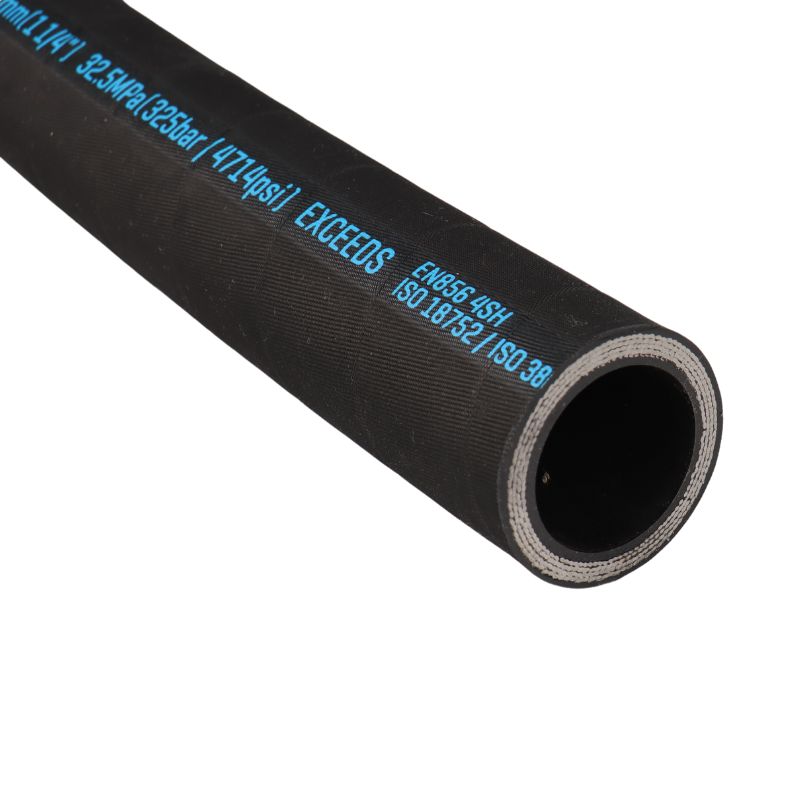
Built for the Extremes
On the surface, 4SP and 4SH hoses appear very similar. Both are four-wire spiral hoses designed for high pressures. The critical difference, designated by the “SH” for “Super High” pressure, lies in the thickness and strength of the steel wire used in the reinforcement layers. The 4SH standard demands a heavier wire gauge, resulting in a hose that can withstand significantly higher working pressures within the same hose diameter. This makes it the hose of choice for the largest and most powerful hydraulic machinery, such as that found in mining, offshore drilling, and forestry.
The construction is so robust and the cover so thick that 4SH hoses almost universally require “skive” type fittings. This means the outer cover must be removed before the fitting is installed to ensure the socket gets a direct, powerful grip on the four layers of heavy steel wire. It is a premium product for applications where maximum pressure containment is the primary concern.
| Specification | Details |
| Common Standard | EN 856 4SH |
| Primary Application | Extreme high-pressure systems with petroleum or water-based fluids. |
| Inner Tube | Oil-resistant synthetic rubber. |
| Reinforcement | Four layers of heavy-gauge high-tensile steel wire spiral. |
| Outer Cover | Abrasion and weather-resistant synthetic rubber. |
| Temperature Range | -40°C to +100°C (-40°F to +212°F) |
What Are the Applications for a Thermoplastic Hose?
Your application requires a non-conductive hose, or you are transferring chemicals that degrade standard rubber. You need a lightweight, clean, and specialized solution that a rubber hose cannot provide.
A thermoplastic hose (SAE 100R7 / EN 855 R7) is used where rubber is unsuitable. Its key features are electrical resistance, chemical compatibility, and excellent abrasion resistance, making it ideal for aerial lifts, lubrication lines, and chemical transfer.
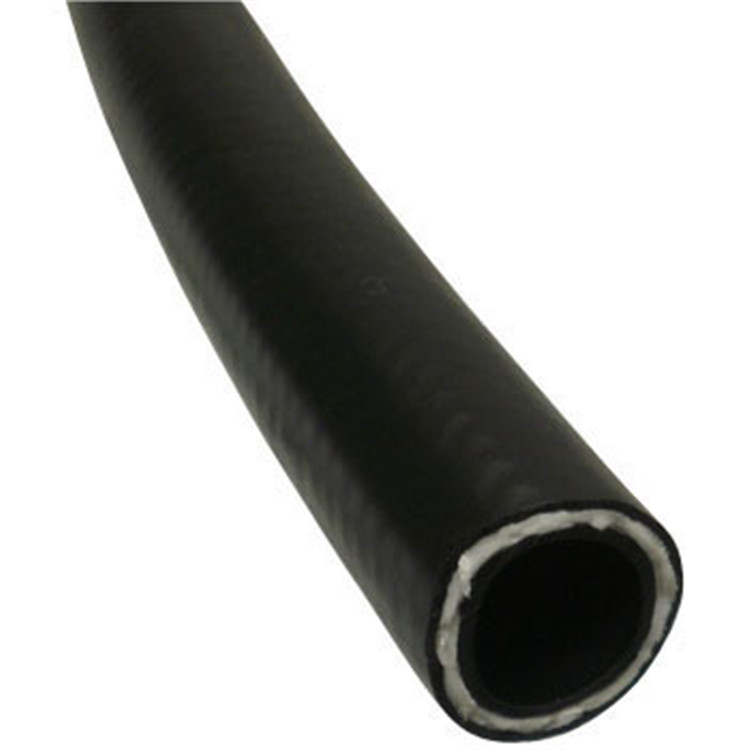
Beyond Rubber and Steel
Thermoplastic hoses represent a completely different approach to hose construction. Instead of a rubber tube and steel braid, they typically use a thermoplastic polyester inner tube. The reinforcement is not steel but two layers of high-strength braided synthetic fiber, like polyester. The outer cover is a tough, smooth polyurethane. This construction gives the SAE 100R7 hose unique properties. First, it is electrically non-conductive, a critical safety feature for equipment like aerial lifts or “cherry pickers” that may come into contact with power lines.
Second, its polyurethane cover offers far greater abrasion resistance than rubber. Third, it is extremely lightweight and flexible with a very tight bend radius. Finally, its materials are suitable for a wider range of chemicals, such as phosphate esters, that can damage standard rubber hoses. It’s the perfect choice for medium-pressure lubrication systems, forklifts, and industrial gas transfer.
| Specification | Details |
| Common Standards | SAE 100 R7, EN 855 R7 |
| Primary Application | Medium-pressure hydraulics, lubrication, chemicals, industrial gases. |
| Inner Tube | Thermoplastic Polyester. |
| Reinforcement | Two layers of high-strength polyester braid. |
| Outer Cover | Abrasion, ozone, and weather-resistant polyurethane. |
| Temperature Range | -40°C to +100°C (-40°F to +212°F) |
When is a PTFE (Teflon) Hose Absolutely Necessary?
Your system operates at extreme temperatures or transports aggressive chemicals that would destroy any other hose. You need the ultimate specialty hose that offers unmatched thermal stability and chemical inertness.
A PTFE (Teflon) hose is necessary for the most demanding applications involving extreme temperatures or corrosive fluids. Its PTFE inner core is chemically inert and can handle temperatures from -54°C to over +200°C, making it essential for chemical plants and steam lines.

The Ultimate Problem-Solver
When all other hose materials fail, PTFE is the answer. Polytetrafluoroethylene (PTFE) is a fluoropolymer with remarkable properties. Its primary advantage is that it is almost completely chemically inert, meaning it will not react with, degrade from, or contaminate the fluids passing through it. This makes it ideal for transferring aggressive chemicals, solvents, and acids. Its second major advantage is its incredibly wide operating temperature range. It remains flexible at cryogenic temperatures and stable at high temperatures that would melt rubber.
The slick, non-stick surface of the PTFE liner also promotes a high flow rate and is easy to clean, a requirement for food-grade or pharmaceutical applications. Because PTFE itself has no structural strength, the hose is reinforced with an outer braid, typically of 304 stainless steel, to provide the pressure rating. A PTFE hose is a premium, high-cost solution reserved for applications where nothing else can survive.
| Specification | Details |
| Common Name | PTFE Hose, Teflon Hose |
| Primary Application | Aggressive chemicals, steam, extreme temperatures, food & beverage. |
| Inner Tube | Polytetrafluoroethylene (PTFE). |
| Reinforcement | Single or double braid of 304 Stainless Steel. |
| Outer Cover | The stainless steel braid is the outer cover. |
| Temperature Range | -54°C to +204°C (-65°F to +400°F) |
Conclusion
Navigating hydraulic hose standards is key to operational success. From the flexible R1AT to the robust 4SH, each standard defines a specific tool for a specific job, ensuring safety, reliability, and performance.
Understanding these differences is complex. At Topa, we manufacture a complete range of hydraulic hoses to meet every major international standard. Contact our experts to ensure you get the right hose for your application, delivered with the quality you demand.
FAQ
Why do hydraulic hoses have so many different standards?
Different standards, such as SAE, EN, and ISO, exist to define construction, performance, and testing requirements, ensuring hoses meet regional safety, compatibility, and pressure specifications.
What’s the main difference between braided and spiral hoses?
Braided hoses use interwoven wire layers for flexibility, while spiral hoses use parallel wire layers for superior strength and impulse resistance, making them ideal for heavy-duty systems.
How can I identify the correct hose for my equipment?
Check your system’s pressure, temperature, and fluid type. Then match these requirements with the hose’s standard code (e.g., SAE 100R2AT, EN 856 4SP) listed in product specifications.
Are all hydraulic hoses compatible with all fluids?
No, fluid compatibility depends on the hose’s inner tube material. For example, Nitrile suits petroleum oils, while PTFE or EPDM is needed for aggressive chemicals or synthetic fluids.
Why is the minimum bend radius important?
Each hose has a rated minimum bend radius. Exceeding it causes reinforcement fatigue, inner tube collapse, and eventual hose failure, reducing both safety and service life.
When should I choose PTFE or thermoplastic hoses instead of rubber?
PTFE hoses are best for extreme heat and chemicals, while thermoplastic hoses are preferred for lightweight, non-conductive, or chemical-resistant applications in industrial and mobile systems.



